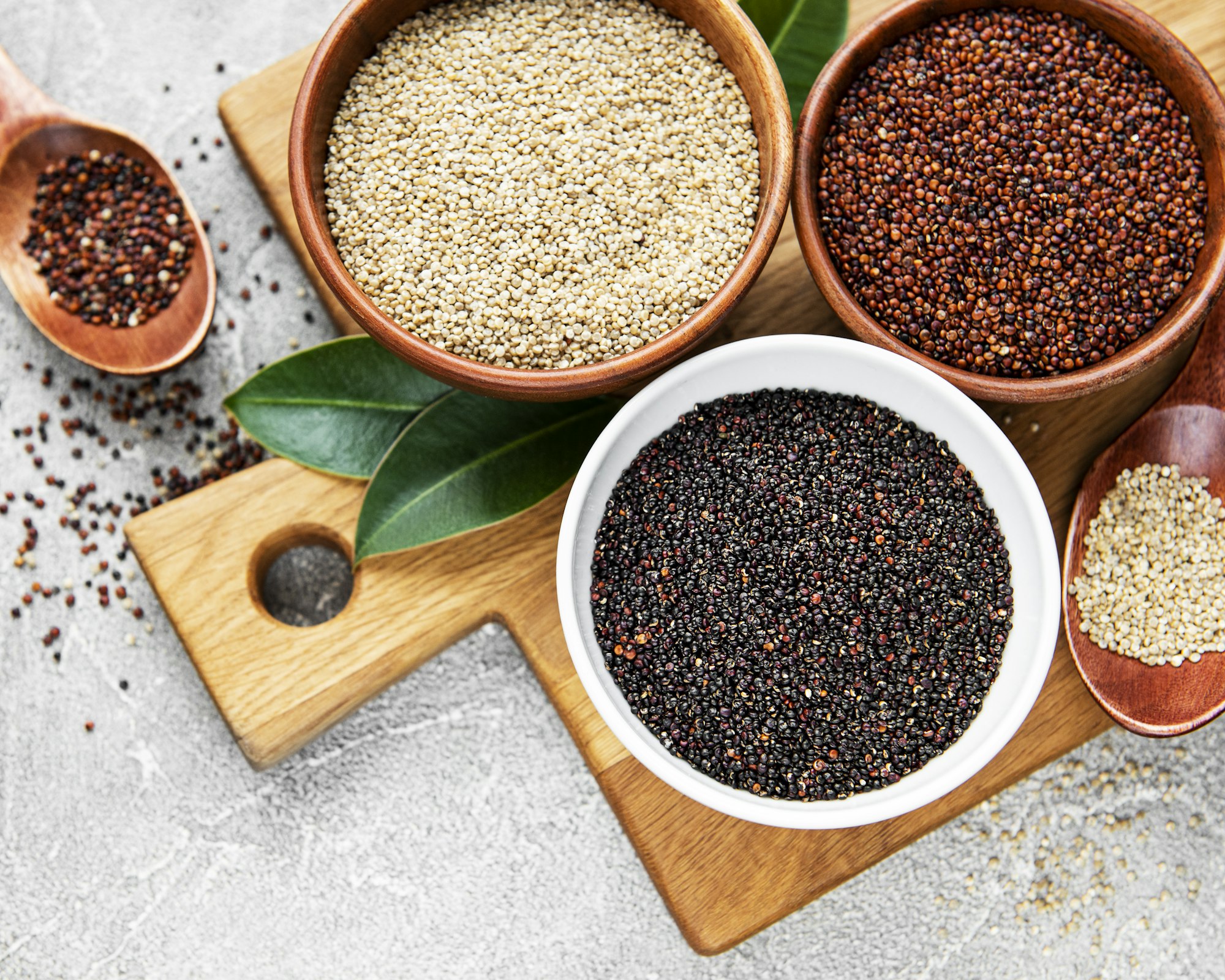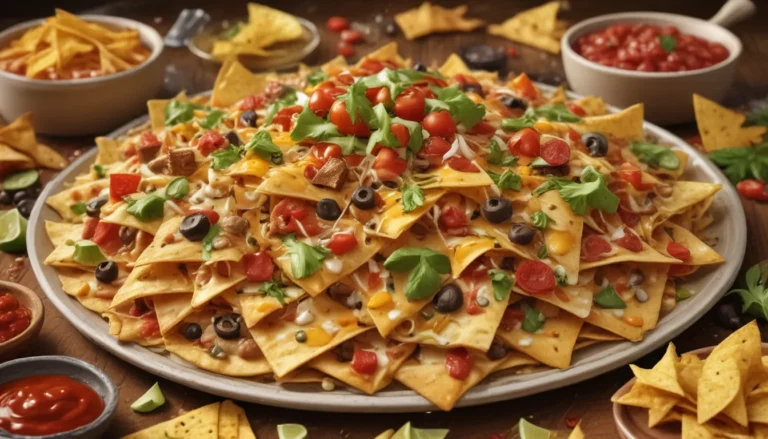The pictures in our articles might not always show exactly what the text is talking about. We use these images to make the article more interesting and eye-catching. They are there to add to the text, but not to replace it or show every detail.
Quinoa, the ancient "super grain," has captivated food enthusiasts and health-conscious individuals worldwide. But how much do you really know about this remarkable seed? Let's dive into 15 fascinating facts about quinoa that will deepen your appreciation for this extraordinary food and maybe even inspire you to incorporate it more into your diet.
1. Quinoa Is Not Actually a Grain
Surprise! Despite being commonly referred to as a grain, quinoa is actually a seed. It comes from a plant called Chenopodium quinoa, which is related to spinach and amaranth. This little detail is just the beginning of what makes quinoa so unique.
The quinoa plant is a member of the Amaranthaceae family, which includes other nutrient-rich plants like beets and spinach. Its seeds are what we commonly eat, and they're packed with an impressive array of nutrients that have earned quinoa its superfood status.
2. It’s Over 5,000 Years Old

Quinoa has been cultivated in the Andean region of South America for over 5,000 years. The Incas considered it sacred, calling it the "mother of all grains." Its long history is a testament to its resilience and nutritional value.
Archaeological evidence suggests that quinoa domestication may have begun even earlier, possibly as far back as 7,000 years ago. The Incas revered quinoa so much that the emperor would traditionally sow the first seeds of the season using golden implements, highlighting the crop's importance in their culture.
3. Quinoa Is a Complete Protein
One of the most impressive facts about quinoa is that it's a complete protein. This means it contains all nine essential amino acids that our bodies can't produce on their own. This makes quinoa an excellent protein source, especially for vegetarians and vegans.
To put this into perspective, most plant-based proteins are incomplete, lacking one or more essential amino acids. Quinoa's complete protein profile is comparable to that of milk, making it an exceptional plant-based protein source. This unique quality has contributed significantly to quinoa's popularity in recent years, especially among those following plant-based diets.
4. It’s Naturally Gluten-Free
For those with celiac disease or gluten sensitivity, quinoa is a godsend. It's naturally gluten-free, making it a safe and nutritious alternative to wheat and other gluten-containing grains.
This gluten-free status, combined with its high nutritional value, has made quinoa a popular ingredient in gluten-free baking and cooking. It can be ground into flour, used whole in salads, or even popped like popcorn, offering a wide range of gluten-free culinary possibilities.
5. Quinoa Comes in Multiple Colors

While white quinoa is the most common variety you'll find in stores, did you know that quinoa actually comes in over 120 varieties? The most popular are white, red, and black quinoa. Each variety has a slightly different taste and texture, adding variety to your meals.
White quinoa has the mildest flavor and softest texture, making it versatile for various dishes. Red quinoa holds its shape better after cooking and has a nuttier flavor, making it great for salads. Black quinoa has an earthier, sweeter taste and becomes crunchier when cooked. Some specialty stores even offer rainbow quinoa, which is a mix of different colored varieties.
6. It’s Incredibly Nutrient-Dense
Quinoa is packed with nutrients. It's an excellent source of:
- Fiber
- Iron
- Magnesium
- Phosphorus
- Manganese
- Folate
This nutrient density makes quinoa a true superfood, contributing to various aspects of our health.
To illustrate just how nutrient-dense quinoa is, let's look at some numbers. A cup of cooked quinoa (185 grams) provides:
- 8 grams of protein
- 5.2 grams of fiber
- 15% of the daily value (DV) for iron
- 30% of the DV for magnesium
- 28% of the DV for phosphorus
- 58% of the DV for manganese
- 19% of the DV for folate
These impressive stats show why quinoa is often referred to as a nutrient powerhouse.
7. Quinoa Has a Low Glycemic Index
For those watching their blood sugar levels, quinoa is a great choice. It has a low glycemic index, which means it doesn't cause rapid spikes in blood sugar. This makes it an excellent option for people with diabetes or those trying to manage their weight.
The glycemic index of quinoa is around 53, which is considered low. In comparison, white rice has a glycemic index of about 73, and white bread is around 75. This low glycemic index, combined with quinoa's high fiber content, helps promote better blood sugar control and sustained energy levels.
8. The Plant Is Incredibly Adaptable
Quinoa is a hardy plant that can grow in various conditions. It thrives in high altitudes and can tolerate frost, high winds, and even drought. This adaptability has allowed it to be cultivated in many parts of the world, from the Andean highlands to the plains of North America.
Quinoa can grow at altitudes ranging from sea level to 4,000 meters (about 13,000 feet) above sea level. It can withstand temperatures from -4°C to 35°C (25°F to 95°F) and requires relatively little water compared to other crops. This resilience makes quinoa a promising crop for areas affected by climate change.
9. Quinoa Seeds Have a Natural Protective Coating
In its natural state, quinoa seeds have a bitter-tasting coating called saponin. This coating serves as a natural insect repellent, protecting the plant during growth. Most commercially sold quinoa has had this coating removed, but it's still a good idea to rinse quinoa before cooking to remove any residual bitterness.
Interestingly, the saponin removed from quinoa isn't wasted. It's used in various applications, from natural soaps and detergents to pharmaceutical products. Some research is even exploring its potential as a natural pesticide.
10. It’s Been to Space (Almost)
Quinoa's impressive nutritional profile hasn't gone unnoticed by space agencies. NASA has considered quinoa as a crop for long-term human space missions due to its high nutritional value and ease of growth.
In fact, quinoa has been part of NASA's Controlled Ecological Life Support System (CELSS) program, which aims to develop sustainable food sources for extended space missions. Its compact growth, high nutrient density, and adaptability make it an ideal candidate for cultivation in the challenging environments of space stations or potential future colonies on other planets.
11. Quinoa Can Be Used in Sweet and Savory Dishes
The versatility of quinoa is truly remarkable. It can be used in both savory dishes like salads and stir-fries, and sweet treats like puddings and breakfast bowls. Its mild, nutty flavor complements a wide range of ingredients.
Some innovative uses of quinoa include:
- Quinoa flour for gluten-free baking
- Quinoa flakes as a substitute for oats
- Puffed quinoa as a crunchy topping for yogurt or smoothie bowls
- Quinoa milk as a plant-based dairy alternative
This versatility makes quinoa an excellent pantry staple for creative cooks looking to experiment with new flavors and textures.
12. It Cooks Quickly
Unlike some whole grains that can take a long time to cook, quinoa is relatively quick and easy to prepare. It usually cooks in about 15-20 minutes, making it a convenient option for busy weeknight meals.
The cooking process is simple: rinse the quinoa, combine it with water or broth in a 1:2 ratio, bring to a boil, then simmer until the liquid is absorbed and the grains are tender. This quick cooking time, combined with its nutritional benefits, makes quinoa an excellent choice for those looking to prepare healthy meals without spending hours in the kitchen.
13. Quinoa Is Sustainable
Quinoa is not only good for our bodies but also for the planet. It requires less water to grow compared to many other crops, and its cultivation helps preserve biodiversity in its native regions.
The plant's ability to grow in harsh conditions means it can be cultivated on land that might not be suitable for other crops. This characteristic could potentially help address food security issues in areas prone to drought or with poor soil quality. Additionally, the increasing global demand for quinoa has led to efforts to preserve traditional quinoa varieties, helping to maintain genetic diversity.
14. It Has Significant Economic Impact
The rise in quinoa's popularity has had a significant impact on the economies of its main producing countries, particularly Peru and Bolivia. It has become an important export crop, providing income for many small farmers.
However, this increased demand has also led to some challenges. The rapid rise in quinoa prices in the early 2010s raised concerns about whether traditional consumers in quinoa-producing regions could still afford their staple food. Fortunately, as production has expanded and more countries have begun cultivating quinoa, prices have stabilized, and efforts are being made to ensure that local populations still have access to this nutritious food.
15. Quinoa Isn’t Just for Eating
While we primarily think of quinoa as food, it has other uses too. In South America, the saponin removed from quinoa is used as a detergent for clothing and as a folk medicine antiseptic for skin injuries.
Research is also exploring other potential uses for quinoa and its byproducts. The starch from quinoa could potentially be used in the production of biodegradable plastics. The plant's leaves, which are also edible and nutritious, are being studied for their potential use in animal feed.
Embracing the Quinoa Revolution
These fascinating facts about quinoa reveal why this ancient seed has become a modern superfood. Its impressive nutritional profile, versatility in cooking, and positive environmental impact make it a food worth celebrating.
Whether you're a long-time quinoa enthusiast or just discovering its wonders, there's always more to learn and appreciate about this remarkable seed. From its ancient origins in the Andean highlands to its place on dinner tables around the world, quinoa continues to surprise and delight us.
So the next time you're planning a meal, why not reach for some quinoa? Experiment with different colors and recipes, and experience firsthand why this superfood has captured the attention of nutritionists, chefs, and health-conscious eaters worldwide.
Remember, incorporating quinoa into your diet isn't just a trend – it's a step towards better nutrition, sustainable eating, and connecting with an ancient food tradition that has stood the test of time. As we face global challenges like climate change and food security, quinoa stands out as a resilient, nutritious, and adaptable crop that could play a crucial role in our future food systems.
Whether you're using it as a base for a hearty salad, a protein-packed side dish, or experimenting with quinoa flour in your baking, this versatile seed offers endless possibilities. Its mild flavor allows it to absorb the tastes of whatever it's cooked with, making it an excellent canvas for a wide range of culinary creations.
Happy cooking, and enjoy exploring the wonderful world of quinoa!






